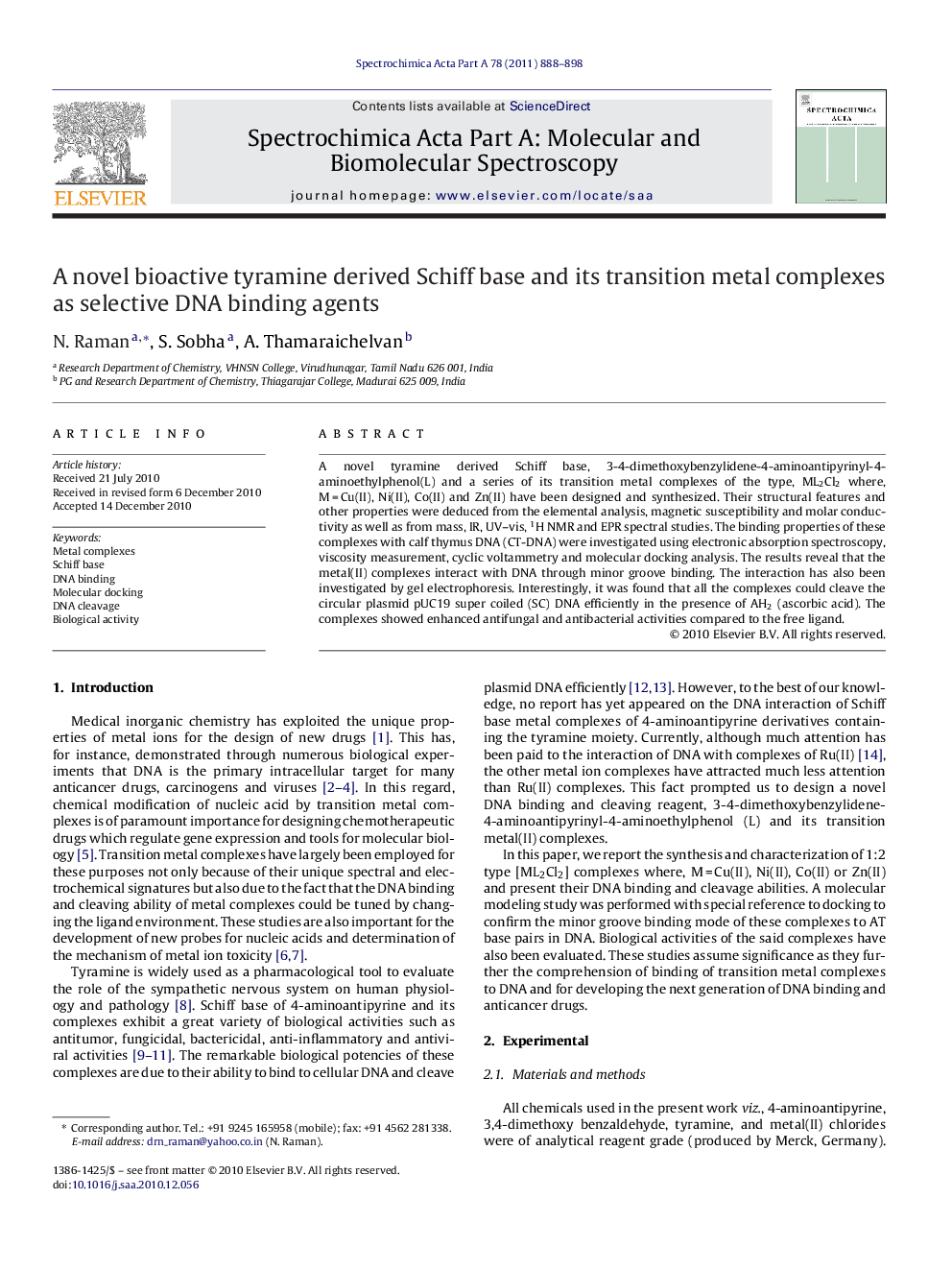| Article ID | Journal | Published Year | Pages | File Type |
|---|---|---|---|---|
| 1233146 | Spectrochimica Acta Part A: Molecular and Biomolecular Spectroscopy | 2011 | 11 Pages |
A novel tyramine derived Schiff base, 3-4-dimethoxybenzylidene-4-aminoantipyrinyl-4-aminoethylphenol(L) and a series of its transition metal complexes of the type, ML2Cl2 where, M = Cu(II), Ni(II), Co(II) and Zn(II) have been designed and synthesized. Their structural features and other properties were deduced from the elemental analysis, magnetic susceptibility and molar conductivity as well as from mass, IR, UV–vis, 1H NMR and EPR spectral studies. The binding properties of these complexes with calf thymus DNA (CT-DNA) were investigated using electronic absorption spectroscopy, viscosity measurement, cyclic voltammetry and molecular docking analysis. The results reveal that the metal(II) complexes interact with DNA through minor groove binding. The interaction has also been investigated by gel electrophoresis. Interestingly, it was found that all the complexes could cleave the circular plasmid pUC19 super coiled (SC) DNA efficiently in the presence of AH2 (ascorbic acid). The complexes showed enhanced antifungal and antibacterial activities compared to the free ligand.
